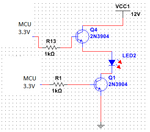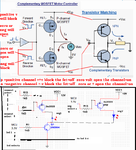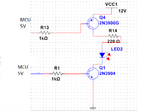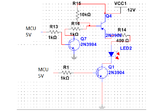maniac84
Full Member level 6
Coil power: 0.36W, 0.45W
Based on that the current is about 0.4w/12v=33mA
I think it should be working.
What is the collector voltage when the base is driven with 3v3 (transistor on)?
Thanks. The board is not wif me now. I will measure it later.
But what do u think the collecor voltage should be?
Is there any other value i should troubleshoot?



